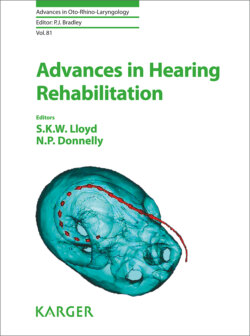Читать книгу Advances in Hearing Rehabilitation - Группа авторов - Страница 24
На сайте Литреса книга снята с продажи.
Clinical Utility
ОглавлениеBecause the TM is translucent, OCT allows imaging of the middle ear structures through the TM. Unlike HFUS, no contact or coupling medium is required between the light source and imaged structures making OCT a non-invasive, non-contact modality. In the past, OCT has been used in vivo to measure tympanic membrane thickness, and infer the presence of biofilm and middle ear infection [26], but with little anatomical resolution. While these techniques were not able to image the entire middle ear volume due to limited depth range, real-time imaging of the entire middle ear volume in vivo using swept-source OCT in both 2D and 3D has recently been demonstrated by the authors (Fig. 11). OCT images such as this one could potentially be used to look in detail at disorders of the TM, such as granular myringitis, and thickening and blunting of the TM. OCT can also measure the vibration of structures in the middle ear, and perform a “vibrogram” [30] (Fig. 12). Doppler OCT imaging has the capacity to revolutionize our understanding of why some middle ears have conductive hearing loss, why some prostheses work and others do not, and what the effects of healing are on vibration responses of the ear.
Fig. 11. OCT image of cadaveric middle ear through the TM, showing visualization of the incus, the stapes and the umbo.
Fig. 12. OCT “Vibrogram” of the middle ear, showing vibration amplitude of middle ear structures measured with a 3D volumetric acquisition through the TM. Redder hues are higher amplitudes, and bluer hues are lower amplitudes of vibration. TM, tympanic membrane; IN, Incus; ST, stapes; M, malleus. Stimulation frequency is 500 Hz.
